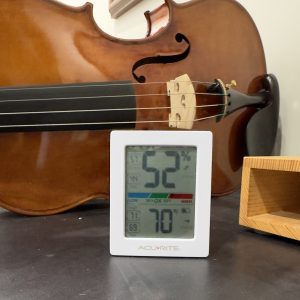Winter Care for String Instruments: Tips to Prevent Damage
These unpredictable cold winter months can pose challenges for string instruments, often leading to issues like slipping pegs, open seams, cracks, and a diminished overall playing experience. However, there are simple steps that string players can take to mitigate these problems, primarily related to temperature and humidity.
Optimal Humidity Levels for String Instruments
During the winter months, the air becomes dryer due to lower temperatures and heating units in buildings. The optimal humidity range for string instruments is between 40% and 60%. In winter, humidity levels can plummet to as low as 10%, causing the contraction of wood fibers, leading to cracks, open seams, and peg slippage. To combat this, consider these solutions:
- Room Humidification: Keep the room where your instrument is stored humidified. There are many cost-effective humidifier options available. Maintaining a humidity level of 40-60% can help preserve your instrument’s health.
- Humidity Control Device: An alternative is to keep your instrument in its case and use a humidity control device. Boveda offers an excellent product called a humidity pack, which can maintain humidity at 50% within the case.
Preventing Cold Weather Damage
Cold temperatures can also contribute to instrument issues. It’s essential to remember that cold weather can cause similar problems, as molecules cannot retain enough moisture. Here are some precautions to take:
- Avoid Leaving Instruments in Cold Vehicles: Never leave your instrument in a cold car while you go shopping or run errands. Cold temperatures can lead to cracks and open seams. Treat your instrument as you would a pet; if you’re uncomfortable, your instrument likely is too.



No Comments